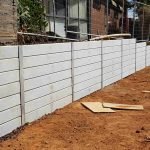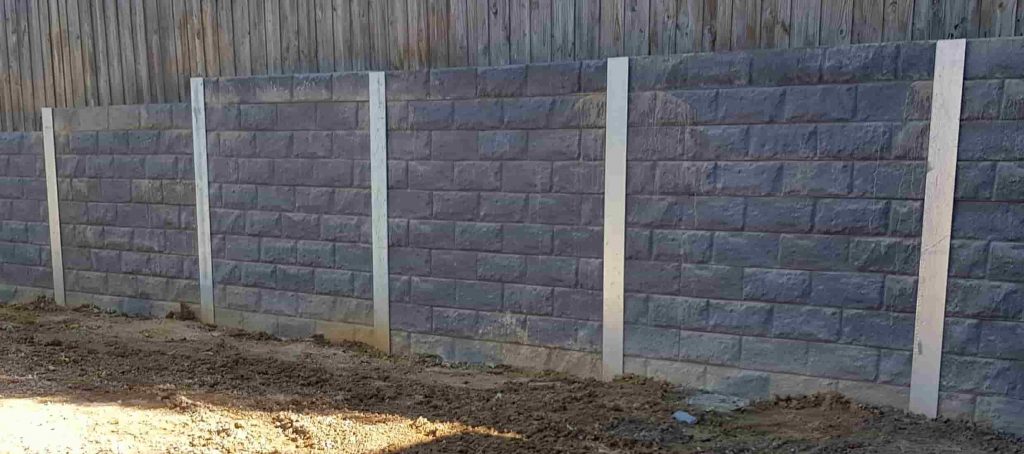
Understanding Permits and Regulations with Your Retaining Wall Installer
Introduction
Building a keeping wall can be a fantastic way to improve your landscape, control erosion, and create usable space. Nevertheless, before you dive into this project, it's vital to understand the permits and policies that use. Working with a retaining wall installer or contractor who is fluent in these requirements can conserve you time, cash, and headaches down the line. This post aims to guide you through browsing the complexities of structure permits and compliance guidelines associated with maintaining walls. Together we'll explore the diverse elements of permitting processes, the function of various types of materials like concrete sleepers, H beams, wood sleepers, timber sleepers, and stone among others.
Understanding Licenses and Laws with Your Retaining Wall Installer
When you're planning to build a keeping wall, among your first discussions should be with your retaining wall builder about regional zoning laws and building regulations. Not all towns have the exact same requirements concerning retaining walls; for this reason comprehending these policies is paramount.
What Are Structure Permits?
A building permit is basically a main approval from your city government that enables you to proceed with building work. This file guarantees that your project adheres to regional codes created to protect public safety, health, and welfare.
Why Do You Need a Permit for Your Maintaining Wall?
The Role of Your Retaining Wall Installer in Protecting Permits
Your retaining wall contractor will frequently play an important part in securing needed authorizations. They are generally acquainted with local policies and can help you navigate through the paperwork needed for submission.
Questions to Ask Your Installer About Permitting
- What licenses are required for my project?
- Will you deal with the application process?
- How long does it usually require to protect a permit?
Types of Maintaining Walls: A Quick Overview
Before diving deeper into licenses and regulations, it's essential to understand different types of keeping walls as they might have cream chargers differing authorization requirements.
Concrete Sleepers
Concrete sleepers are popular due to their resilience and low maintenance needs. They are often used in property settings due to the fact that they provide outstanding resistance against weather conditions.
H Beams
H beams offer exceptional load-bearing capabilities, making them ideal for bigger tasks where soil pressure might be more significant.
Wood Sleepers
Wood sleepers offer a more natural aesthetic but may need additional treatments for longevity versus rot.
Timber Sleepers
Similar to wood sleepers however typically thicker and tougher; lumber choices likewise include a rustic appeal but may not have the same lifespan as concrete alternatives.
Stone Retaining Walls
Stone walls can be incredibly gorgeous however frequently require knowledgeable craftsmanship which might cause higher expenses and more stringent guidelines regarding installation methods.
Local Zoning Laws Affecting Your Project
Zoning laws determine how land can be utilized within specific locations. Understanding these laws is important when working on any construction task including maintaining walls.
Setback Requirements
Most jurisdictions have problem requirements that dictate how far back from property lines structures should sit.
Example:
|Area Type|Minimum Obstacle|| -----------|----------------|| Residential|5 feet|| Commercial|10 feet|
Building Codes Related to Maintaining Walls
Building codes establish requirements for construction practices within your locality; violating these can result in fines or perhaps demolition orders.
Structural Stability Standards
Regulations frequently specify minimum heights for walls depending on their products-- concrete sleep walls might have more stringent standards than wood ones due to their weight-bearing capacities.
How Does Soil Type Influence License Requirements?
The kind of soil on your home plays a substantial role in figuring out whether you'll need extra engineering evaluations before constructing your maintaining wall.
Question: What soil types most commonly affect keeping wall construction?
Each soil type has its own characteristics that could either support or weaken a retaining structure's stability.
Engineering Considerations: When You May Required an Engineer's Sign-Off?
In some cases-- especially if you're constructing a taller or more complicated wall-- your town may need plans signed off by an engineer or architect before providing permits.
Cost Ramifications of Authorizations and Regulations on Your Project Budget
Understanding the cost implications related to permits can affect your total spending plan significantly.
Breakdown of Potential Costs
Timeline for Protecting Licenses: What To Expect?
The timeline can differ widely based upon locality; however, find shops near me for Mr cream chargers here's what you might prepare for:
FAQs About Retaining Wall Installation
1. Do I require a permit for a small retaining wall?
Yes! Many jurisdictions require licenses even for smaller structures since they still impact drainage patterns and home lines.
2. For how long does it require to get a permit?
Typically in between one week to a number of months depending on local policies and complexity involved in the project.

3. Can my installer manage all permitting tasks?
Often yes! Many skilled specialists manage this procedure as part of their service offering.

4. What takes place if I don't acquire a permit?
You risk of facing fines or being purchased to dismantle an unpermitted structure.
5. Exist different requirements for various materials?
Yes! Particular products might have special structural code requirements which could affect allowing procedures considerably.
6. How do I find out about local zoning laws?
Visit your local community workplace or check their website where zoning regulations are generally posted online!

Conclusion
Understanding licenses and regulations with your retaining wall installer is not almost bureaucracy; it includes safety, community requirements, and eventually protecting your financial investment! By approaching this job thoughtfully-- with open lines of communication in between yourself and qualified experts-- you'll lead the way towards effectively finishing your task while adhering strictly to all legal requirements surrounding it! Whether you're choosing concrete sleepers, wooden options like timber sleeper walls, or grand stone building and constructions-- being notified will constantly make your journey smoother!